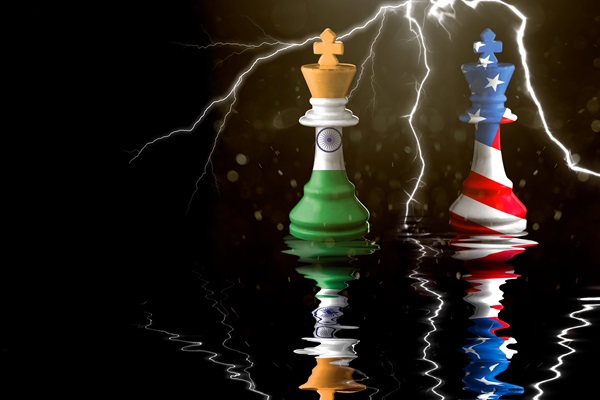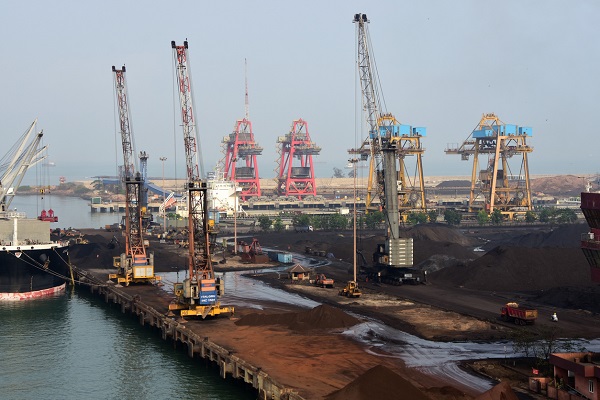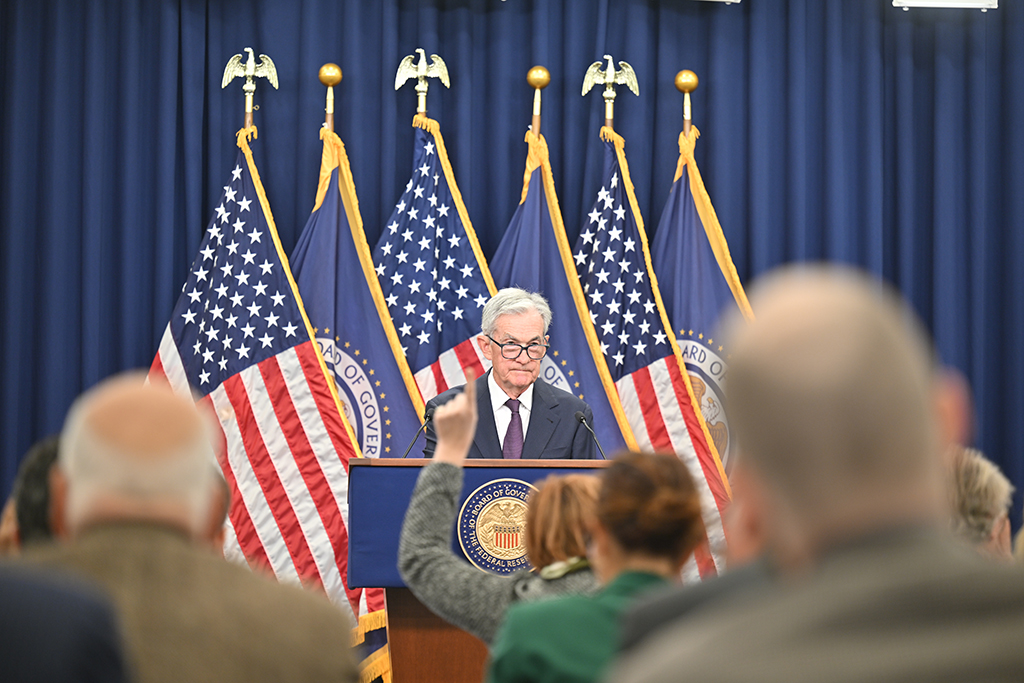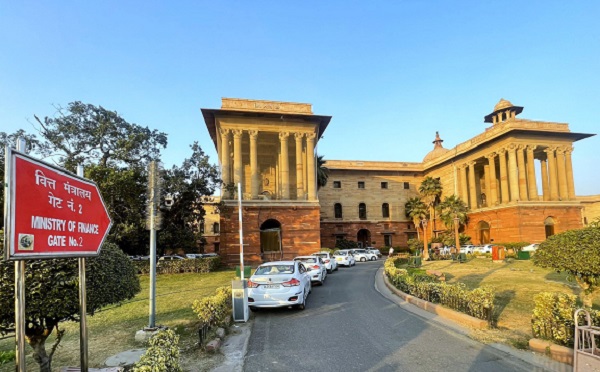.png)

Dhananjay Sinha, CEO and Co-Head of Institutional Equities at Systematix Group, has over 25 years of experience in macroeconomics, strategy, and equity research. A prolific writer, Dhananjay is known for his data-driven views on markets, sectors, and cycles.
April 4, 2025 at 6:36 AM IST
India’s measured silence on the United States’ sweeping new tariff regime belies the scale of the shock. President Donald Trump’s Liberation Day executive order introduces a new era of protectionism that is more punitive, more ideological and potentially more damaging than anything seen in the modern trading system. From April 5, all goods entering the US are subject to a minimum 10% levy. From April 9, fifty-two major trade partners, including India and China, face an additional surcharge or reciprocal tariff, calculated as half their bilateral trade deficit with the US as a share of total imports. For China, that means a 34% surcharge on top of existing duties, while India faces a 26% hit.
On average, the new tariff regime raises the effective duty rate to 26.2%—almost eight times the pre-Liberation Day level of 3.3%. This takes the US back to a protectionist level last seen around the turn of the 20th century, when the post-Civil War industrial surge triggered the first Gilded Age. Trump’s plan is to trigger a second one. The problem is that the world—and the US—is no longer structured to repeat that trajectory.
By basing tariffs on country-specific trade deficits, the administration has imposed a broad, blunt instrument rather than a calibrated system of economic incentives. The 52 targeted countries account for two-thirds of US imports, while the remaining 170—each with minimal trade share—are subject to a flat 10%. Trump’s goal is to reduce the trade deficit, now at $1.2 trillion and rising, but the indiscriminate targeting includes small economies like Laos and Madagascar, which now face higher average tariffs than larger peers. China’s 17% share of US imports sees a combined 57% effective tariff—close to Trump’s campaign pitch—but the average for all targeted countries has risen from 3.3% to 34.6%.
The result is a form of fiscal mercantilism that front-loads tax revenue. The Trump administration expects $6 trillion in tariff collections over 10 years. But historical precedent suggests this will come at an economic cost. Using a modified PIIE framework, the potential GDP loss from this tariff surge is estimated at $7.8 trillion over the next decade—2.8 times the expected revenue gain. US imports from China could fall by 80%, and imports from the rest of the world by 20%, delivering a global trade shock equivalent to a 28% contraction.
The new regime hits emerging markets the hardest. Countries in Southeast Asia, Eastern Europe and the Middle East have some of the highest trade-deficit-to-import ratios. These nations now risk losing export competitiveness, suffering capital flight, and seeing their growth differentials with the developed world narrow. For India, which has a relatively lower tariff rate than China, the immediate effect may appear modest. But the second-order impact—weak global demand, Chinese dumping into third markets, and reduced capital flows—could prove severe.
India’s growth model is structurally tethered to global trade momentum. Every 100-basis-point decline in world trade volume has historically shaved off 178 basis points from India’s real GDP growth. This sensitivity was on full display during Trump’s first term, when escalating tariffs and trade friction slowed India’s growth to 3.5% in 2019, down from an average of 6.8% two years earlier. A repeat scenario may unfold, with the added risk that global capital flows—especially foreign direct investment and portfolio inflows—will become more volatile.
Corporate earnings will not be immune. A decline in trade openness tends to hit topline growth and compress margins. For every 100-basis-point rise in global tariffs, India Inc.’s earnings growth could drop by up to 200 basis points, with sectors such as chemicals, engineering, petroleum, IT services and metals particularly exposed to the dual hit of weaker exports and rising input costs. At the same time, increased global supply of Chinese goods may disrupt domestic pricing in intermediate and finished goods markets, further squeezing margins.
On the capital formation front, protectionism-induced uncertainty is likely to weigh on private investment. A weaker global backdrop reduces export visibility and deters capital allocation in tradable sectors. Meanwhile, households facing higher imported inflation and tighter labour markets will likely reduce discretionary spending. With savings rates already under strain, this could translate into a consumption drag, extending the fragility in domestic demand.
Domestic macro policy will now be paramount. With fiscal space constrained by slowing revenue and deficit targets, India is unlikely to mount a large stimulus. Public spending will tilt toward revenue items, limiting capex-driven growth. That puts the onus on the Reserve Bank of India to deliver liquidity and, where feasible, rate cuts. Yet monetary policy alone will be an inadequate offset. The absence of a global tailwind makes domestic demand the only lever—and that, too, is weakening.
Trump’s vision of a second Gilded Age is built on nostalgia. The US no longer has the demographic dividend, immigration tailwind, or innovation edge that underpinned the original version. What remains is a risky fiscal playbook and a global backlash. Countries across the Global South are increasingly rallying behind China’s narrative of equitable globalisation and monetary multipolarity. If Trump persists, this could accelerate the erosion of the dollar’s dominance and push world trade further into regional blocs. That would mark a reversal of the liberalisation that drove global prosperity for much of the past century.
Markets are caught between a worst-case scenario of global recession and the faint hope that bilateral deals will temper Trump’s bluster. Either way, the damage is done. Equity returns may remain subdued, with the Nifty 50 likely to deliver no more than 5–6% annual earnings growth in the foreseeable future. Gold and high-grade bonds will be better shelters. In the age of revived mercantilism, markets must brace for lower growth, higher uncertainty—and the end of globalisation as we knew it.
Also Read:
What Drives Trump's Madness
Reciprocal Tariffs: Brace For Impact
Trump’s Tariff Shock Revives Mercantilism, Endangers Global Trade
Bilateralism Trumps Multilateralism As US Resets Trade Terms
India’s Muted Response To US Tariffs Contrasts With Global Assertiveness
India Likely to Gain from Trump’s Tariff Overhaul
India Singled Out In Trump’s Escalating Tariff crusade




